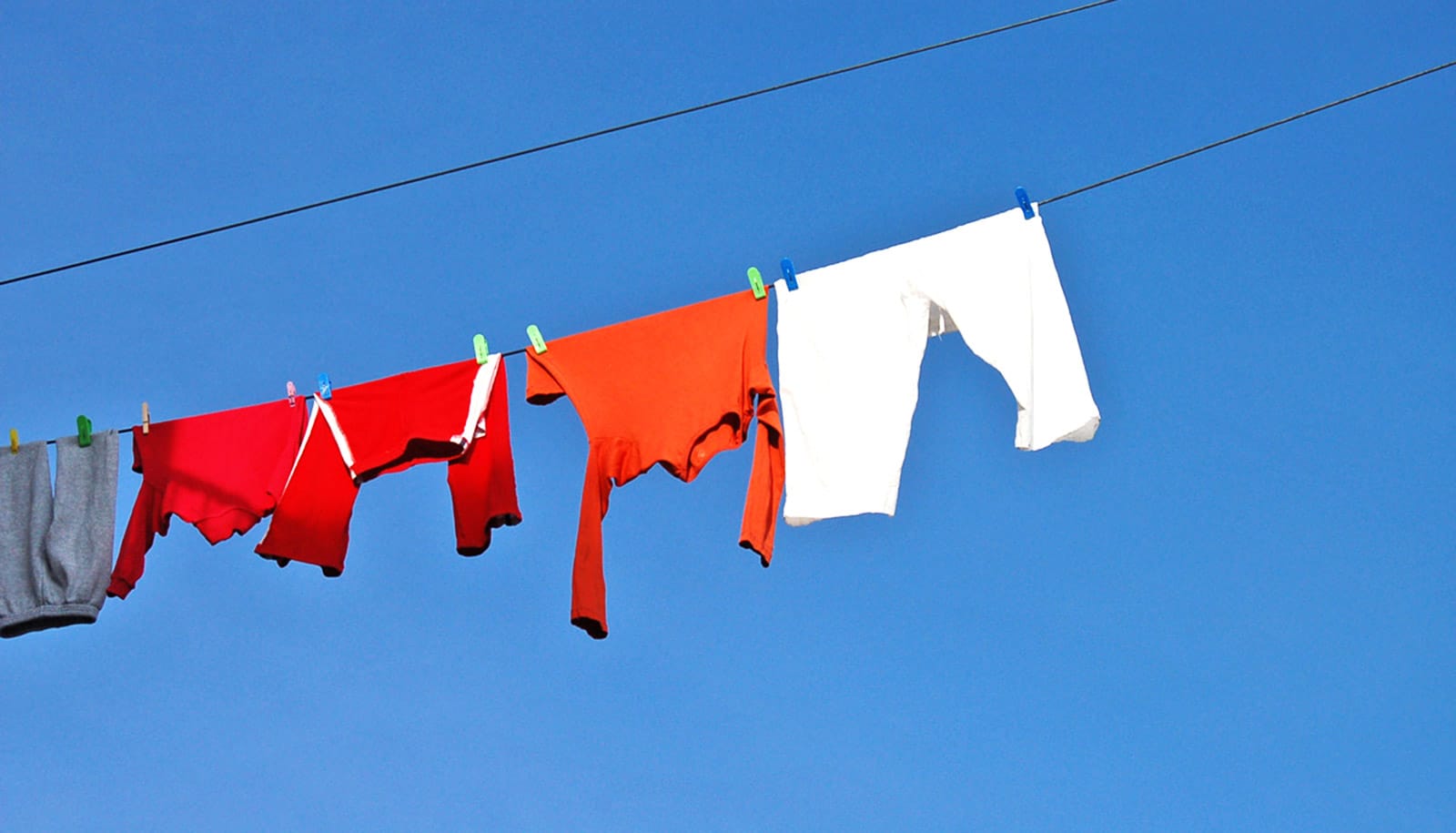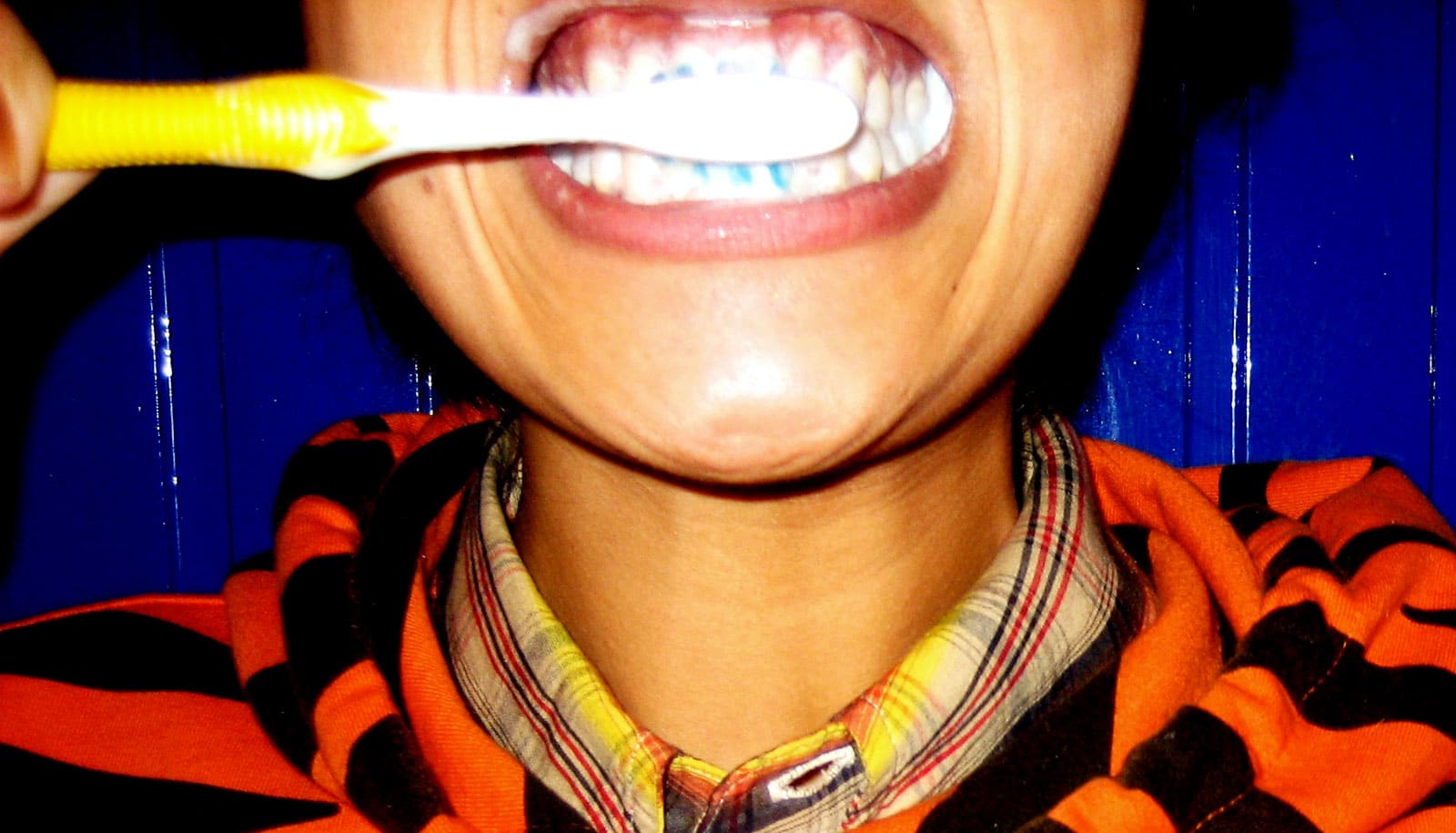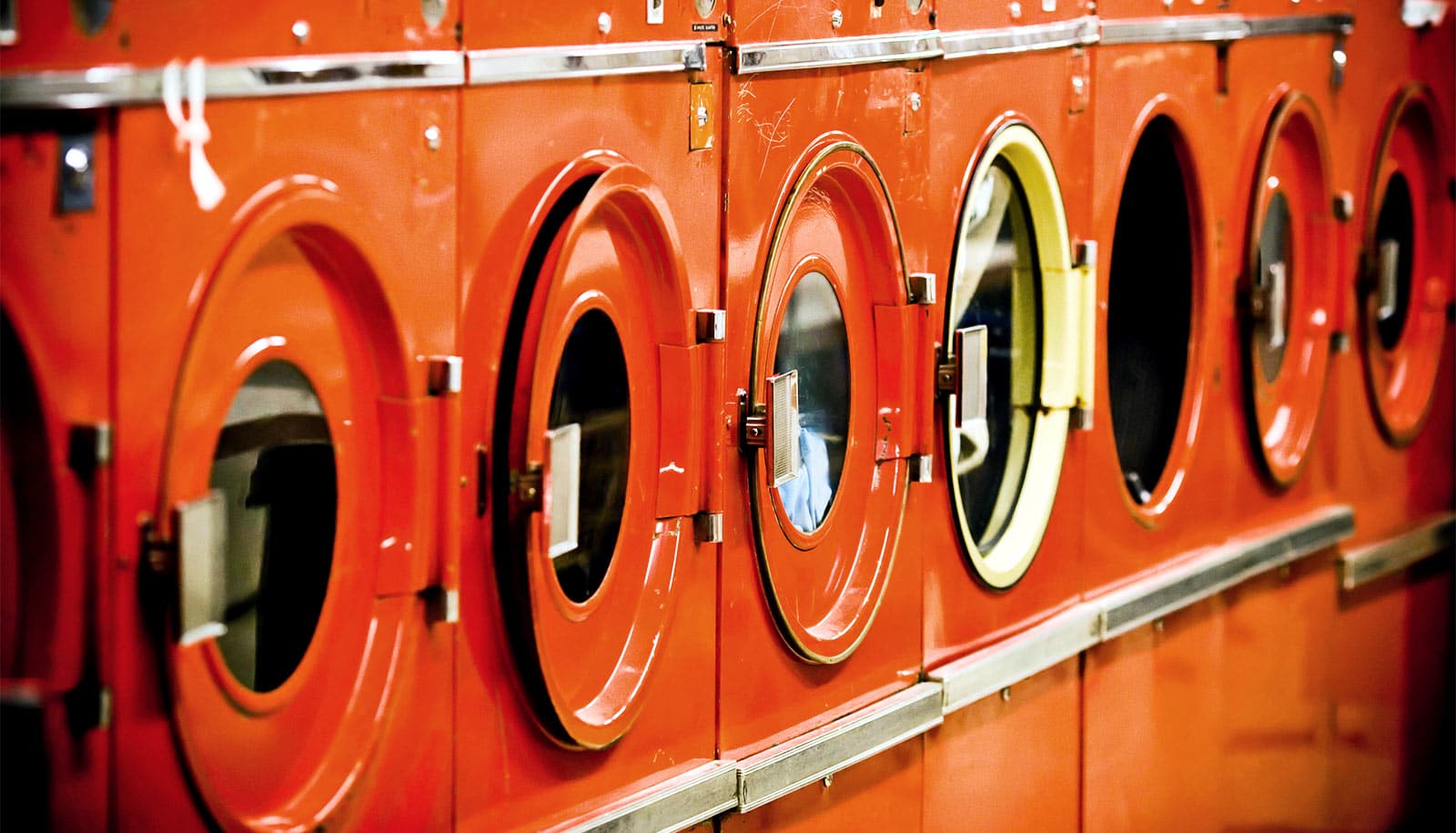Doing the laundry is one of the way we maintain a clean and healthy household, but with the ongoing COVID-19 pandemic and cold and flu season right around the corner, is a standard wash enough?
The soiled laundry in our hampers can be contaminated with all sorts of germs, including bodily fluids and food debris, which can be a source of pathogenic bacteria, fungi, and viruses.
Environmental microbiologists and public health researchers at the University of Arizona recently reviewed what we know and the science surrounding laundry best practices.
“We really wanted to approach it analytically, using a quantitative microbial risk management approach,” says Charles Gerba, an environmental microbiologist in the College of Agriculture and Life Sciences. “What’s the process and what’s really important? There really hasn’t been a lot of scientific guidelines or best practices put together for how to safely tackle household laundry.”
“Most studies on how laundry practices kill germs are based on European wash conditions where higher water temperatures and longer wash cycles are common. Hot water washes, however, use a lot of energy and can damage many of today’s fabrics,” says Kelly Reynolds, professor and chair of the department of community, environment, and policy at the Mel and Enid Zuckerman College of Public Health. “We were interested in evaluating whether the more common North American practice of using cold or warm water temperatures was sufficient.”
Here, Reynolds and Gerba sort through a laundry list of questions, including how long germs can survive on garments and the best safe handling procedures:
Can our laundry carry germs that could get us sick?
Gerba: Studies have shown that skin, blood, feces, and saliva-borne pathogens can be transmitted by laundry. Laundry is a collector of human bodily waste, in addition to food and dirt from normal daily activities.
Reynolds: If someone is sick in the home, the laundry may be contaminated. Exposure to germs can occur while handling dirty laundry or transferring wet laundry from the washer to the dryer. It is always a good idea to wash your hands after handling soiled or wet laundry, even in healthy households.
How long do those germs live on laundry?
Gerba: While respiratory viruses that cause COVID-19, colds, and flu only survive a few days at most, viruses that cause diarrhea can survive for weeks. Bacteria can survive for weeks and, under some conditions, grow in stored laundry. You leave lots of good things for bacteria to eat in your clothing and cleaning tools, like washcloths.
Reynolds: Germs survive better when they are surrounded by dirt, skin cells, or bodily fluids—such as mucus and saliva. This is why we recommend using deeper cleaning detergents with a wide variety of cleaning ingredients including enzymes to break up dirt and organic matter and to wash certain items more frequently, like sheets, towels, and pillowcases.
Does a normal wash cycle kill germs?
Reynolds: A normal wash cycle, combined with the use of a deep-cleaning detergent, is sufficient for everyday cleaning in healthy households and also very effective for killing respiratory viruses that cause colds, flu, and COVID-19.
Gerba: Germs are greatly reduced by the wash cycle during laundering, and a typical wash cycle is adequate for normal household loads. Laundry sanitizers are not required for everyday cleaning.
What about water temperature? Does that matter?
Gerba: Most common germs are greatly reduced by washing, even in cold water temperatures, and this is adequate for normal household laundry.
Reynolds: Generally, higher water temperatures kill more germs. If someone in your family is ill, clothes should be washed in the highest temperature recommended by the manufacturer’s label. If washing in hot water is not an option, deep cleaning detergents provide adequate protection from COVID-19, cold, and flu viruses.
If someone is sick in my household, do I need to take extra precautions?
Gerba: Yes. Clothing from ill individuals can become highly contaminated with germs, and it is best to have a strategy for proper handling and washing.
Reynolds: Soiled clothes or bedding from an ill individual should be washed as soon as possible. Wear disposable gloves when handling contaminated laundry and don’t shake the laundry. The idea here is to avoid spreading the contamination to your hands or other surfaces in your home.
You can wash clothes and linens from someone with a respiratory infection, including COVID-19, with other family members’ items. But if someone has a stomach flu or has a weakened immune system, those items should be washed separately from other family members’ items.
What about health care workers or others who work in high-risk fields? Do they need to be extra careful with their clothes?
Reynolds: Extra precautions are recommended if someone in the household works in high-risk field where they have contact with sick patients or animals. Since their clothes could be contaminated with a wide range of germs, they should take a precautionary approach to wash and sanitize their laundry every time to prevent the potential spread of germs to other household members.
Gerba: Because health care workers are often exposed to ill individuals, they should also wash their professional clothing separate from the family laundry and use hot water or the sanitizing cycle on the washing machine and a bleach or registered laundry sanitizer. I would also recommend completely drying in a machine on the high heat setting, as this further reduces the number of germs.
When should I bring in the big guns, like bleach and other sanitizing agents?
Gerba: You don’t need to use bleach or laundry sanitizer for everyday cleaning. Laundry sanitizers are an added extra step needed during specific illnesses, such as the stomach flu, and are not needed to protect against the viruses that cause colds, the flu, and COVID-19. In special situations where a laundry sanitizer is recommended for use, it should always be used after washing with a deeper cleaning laundry detergent.
Bleach or another sanitizing agent should be used in households with confirmed or suspected enteric infections like stomach bugs with vomiting and/or diarrhea, persons with weakened immune systems, or work clothes potentially contaminated with pathogens of human, animal, or agricultural origin.
Reynolds: Germs that cause symptoms of diarrhea, vomiting, or stomach flu are generally more difficult to kill compared to respiratory germs. That’s why items contaminated with these bugs should be washed separately from other people’s items. Washing in hot water, using a deeper cleaning laundry detergent, and adding a registered sanitizer or using the sanitizing cycle on the washing machine provides maximum protection against the hardest-to-kill germs. Drying clothes on high heat adds another layer of protection.
Should I sanitize my hamper and washing machine?
Gerba: I recommend that when you are done doing the family laundry you run an empty load with bleach or a sanitizer in the washing machine, especially when washing items from an individual with a stomach bug or contaminated work clothes. Bacteria remaining in the washing machine may persist in the washing drum and contaminate the next load of clothing.
Reynolds: It is a good idea to clean and disinfect the clothes hamper and other surfaces like counter tops that are in contact with soiled laundry, especially when illness occurs, and if you plan to transport clean laundry in the same hamper.
Source: University of Arizona



